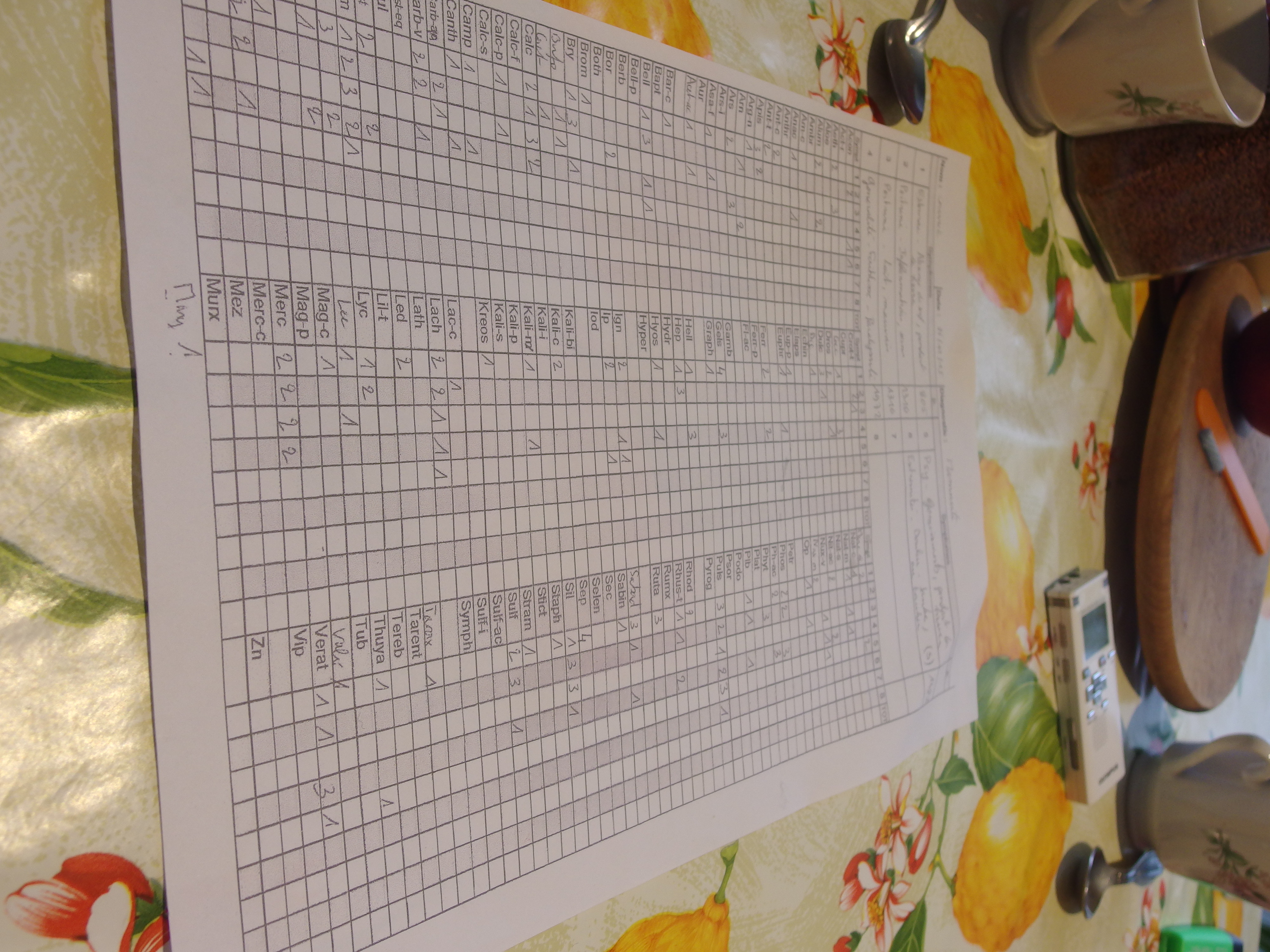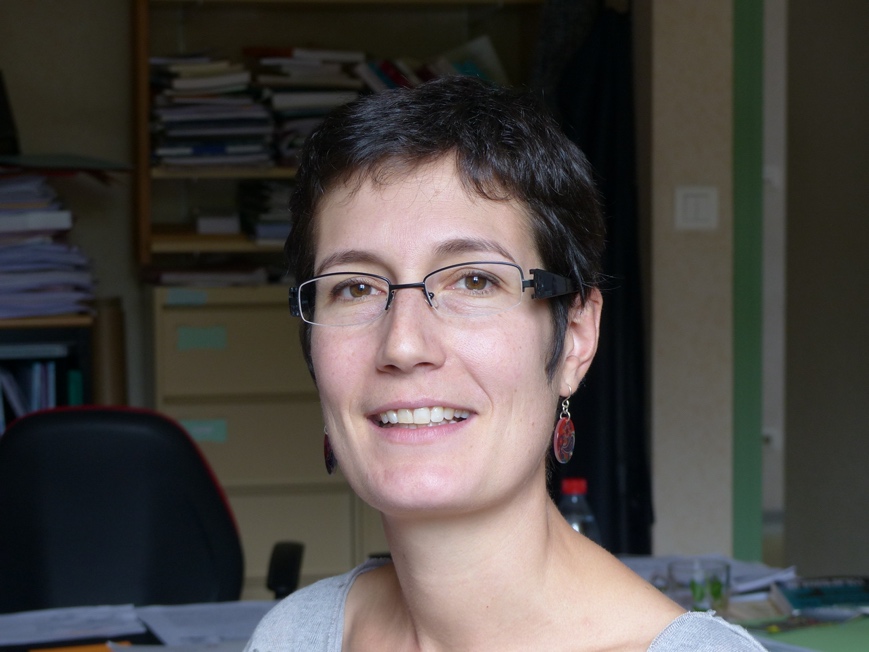My interest in alternative medicine came to light in 2008 during a field survey carried out in the organic livestock farming sector. At the time I was studying the dynamics of the development of organic agriculture (OA) in two dairy farming zones in the east of France: the Vosges plain and the hilly region known as Alsace bossue. There I met some farmers who already practise OA, others who were thinking about converting to it, and yet others who had ceased farming in this way. I also met advisors specialising in OA and technical salesmen who work with organic farmers. I took part in various local events and meetings with organic farmers (“technical days”, training courses and an organic fair)[1]. Organic farming specifications impose a restriction on the use of synthetic chemical drugs - mainly antibiotics. This is why, when converting to OA, farmers look for animal health management methods that require fewer antibiotics.
I discovered the importance of alternative medicine in organic livestock farming during a one-day training course given by a homeopathic veterinarian on the global approach to animal health. Although the course focused on breeding and feeding methods that make it possible to limit health problems, the veterinarian also talked about alternative medicine and about homeopathy in particular. He briefly explained the basics of this therapy and suggested several remedies for common livestock diseases. Some of the organic farmers I interviewed over the course of this survey had received training in homeopathy but were no longer using this method. I was told about just one farmer, now retired, who had managed to treat his animals with homeopathy. The others found this approach too difficult to implement without the support of a homeopathic veterinarian. Yet among French rural veterinarians, few have trained in homeopathy, as this specialization is not available in veterinary schools[2].
I was intrigued by these alternative animal health management techniques: their use seemed self-evident in the world of organic agriculture, but was still being ignored by rural veterinarians. So I decided to continue my research on this subject. However, it took several years to find funding and suitable scientific collaborations. In 2016 I began a study on herd health management with the support of Claire Manoli, who initially trained as a veterinary surgeon and who is now a teacher-researcher in zootechnics at the ESA in Angers[3].
As a first step, we chose to focus solely on methods of health prevention and to leave aside alternative medicines such as homeopathy or aromatherapy, which also have a curative purpose. More specifically, we focused on a tool derived from the homeopathic approach, Obsalim®[4]. We had contacted two organizations providing continuing education in agriculture, one in the Haute-Saône region and the other in the Jura, who provided us with lists of dairy farmers who had participated in Obsalim® training courses. The nine dairy farmers we met were chosen at random from these lists. During the interviews, the farmers talked not only about the Obsalim® method, but also about other alternative approaches to animal health for which they had also been trained. Indeed, the majority of these dairy farmers were very committed to the management of their animals' health and very open to different methods of care. In particular, three of these farmers, located in the Jura region, had taken an interest in homeopathy. They were part of an informal group of farmers who met once or twice a year to discuss their use of homeopathy. They all used a unicist homeopathic approach, whereby a single remedy suffices to treat a sick individual.


The important thing is to acquire the reflexes that will allow you to rapidly link one or more clinical signs to a homeopathic remedy. This means having both an acute sense of observation and a thorough understanding of homeopathic treatments and their indications. For example, one dairy farmer told us that he likes to flick through "medical stuff" for pleasure, as this allows him to gradually get to grips with different homeopathic remedies. Other farmers prefer to stick to practical guides, which limit themselves to the most common remedies in veterinary homeopathy.
This first study was supplemented by other interviews, carried out in other regions, with organic dairy farmers only. I noted that the majority were not as strict in their application of the unicist homeopathic approach, but that they limited themselves to a few remedies relating to the targeted pathologies. This seemed to me to contradict the very principle of the homeopathic approach that had been explained to me by the veterinary trainer and the first dairy farmers I had met. I discussed this with my general practitioner, himself a homeopath. He confirmed that certain remedies are used as "symptomatic treatments", that their effects are so powerful that they are almost independent of the patient’s profile. This is the case with Arnica, a remedy used for bruises and inflammation. Another explanation has been suggested to me: cows in the same herd might have relatively similar profiles, due to the genetic selection made by farmer, so the same remedy might be suitable for all the animals. This is the explanation given to justify the use of homeopathy in poultry farms, where the pellets are directly dissolved in the drinking water.
After digging a bit deeper, I realised that dairy farmers practise homeopathy in different ways. It was through a gradual initiation, provided by farmers passionate about this therapy, that I was able to see how far out of the way they were prepared to go to learn about this alternative medicine. However, none of the farmers expressed any doubts about the effectiveness of this therapy, most failures being put down to a lack of understanding of the homeopathic approach. In the next blogpost, which will focus on the analysis of another type of material collected during the studies - healing stories - I will come back to the factors that explain why farmers adhere to this therapy, despite the difficulties in putting it into practice.
This piece has first been published in French on the Transhumances research blog, which we are thankful to to have allowed us to replicate it here !
References:
Hellec F., Blouet A., (2012). « Technicité versus autonomie. Deux conceptions de l’élevage laitier biologique dans l’est de la France », Terrains et travaux 20 : 157-172
Hellec F., Manoli C. (2018) « Soigner autrement ses animaux : la construction par les éleveurs de nouvelles approches thérapeutiques » Economie rurale 363 : 7-23.
Notes
- ^ The results of this research were published in Hellec, Blouet, 2012.
- ^ On this point, see the post by Lorène Piquerez on the Transhumances blog: https://ritme.hypotheses.org/1580
- ^ This research was carried out as part of the COPPECS project, funded by INRA's GISA and AgriBio4 programmes.
- ^ Obsalim® is a method developed by Doctor Giboudeau which aims to adjust the animals' feed on the basis of indicators that can be observed directly on the animal. The observation points are directly inspired by those used for homeopathic diagnosis), which consists in managing animal feed in order to limit health problems (an initial analysis of this study is presented in Hellec and Manoli, 2018.
- ^ Materia Medica is the title given to homeopathy reference books, which list all the homeopathic remedies available and their therapeutic indications. There is no medical subject specific to animal health available in the French language. The dairy farmers we met mainly use James Kent's Materia Medica on human health, of which there are various translations in French

